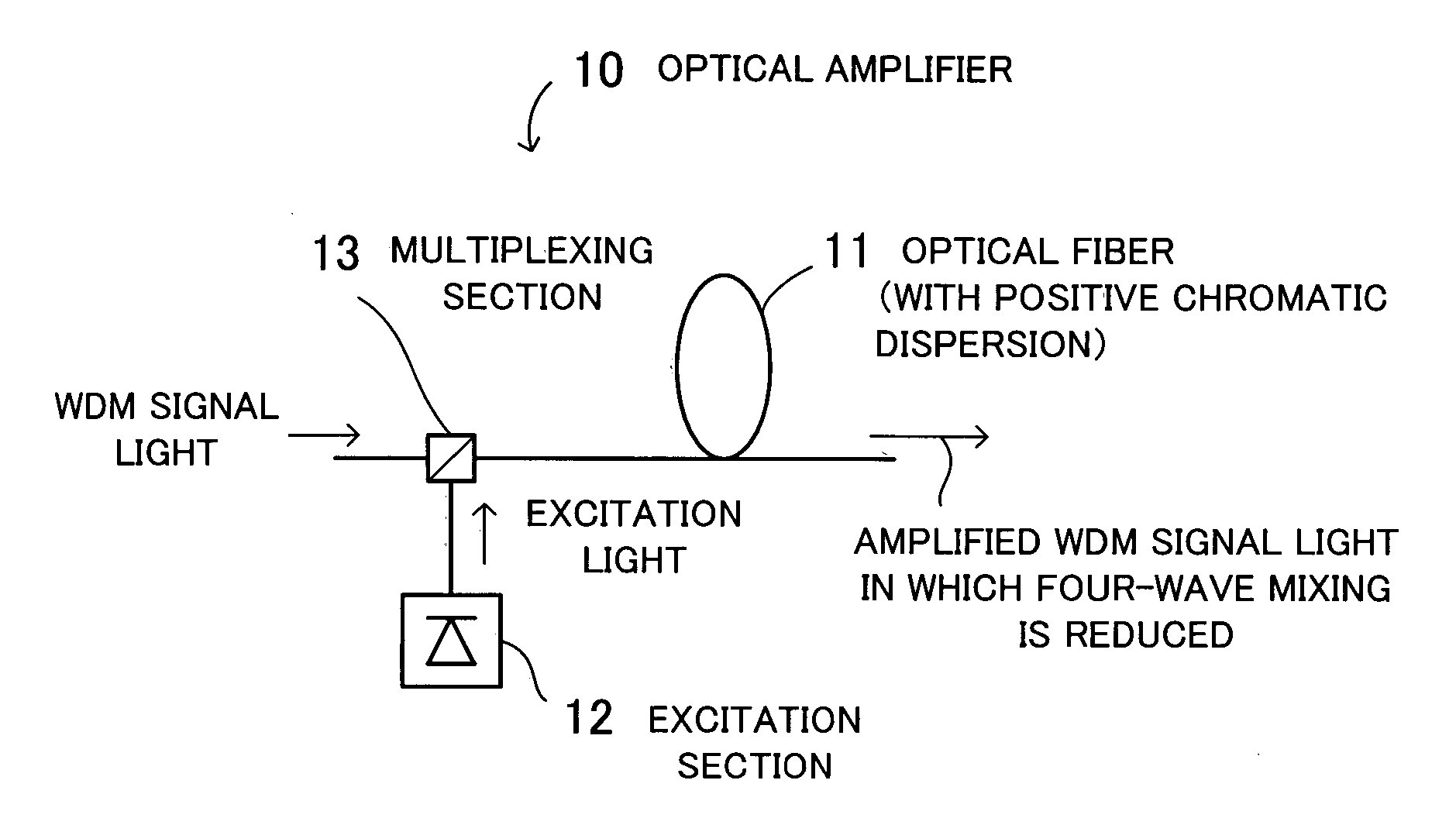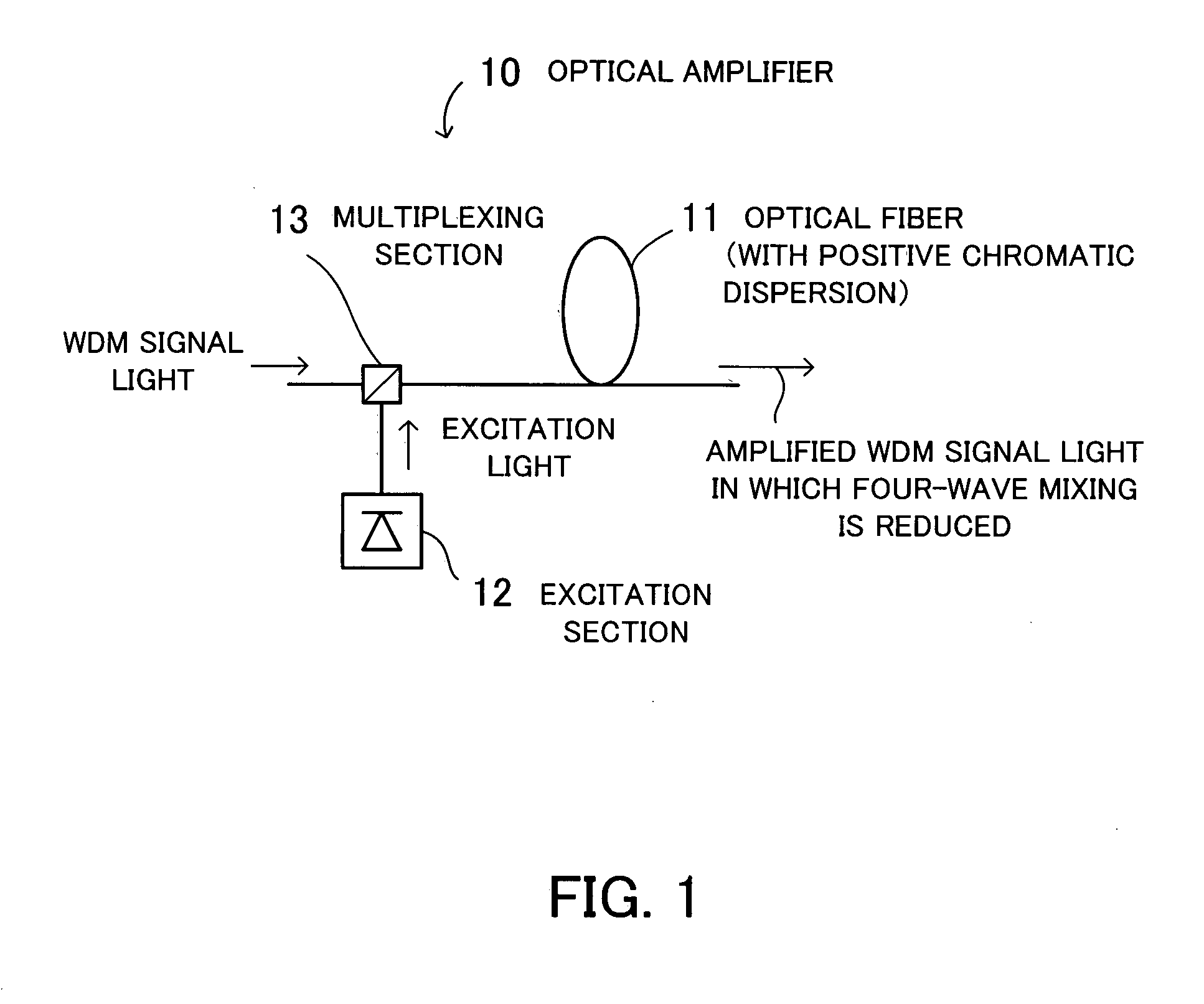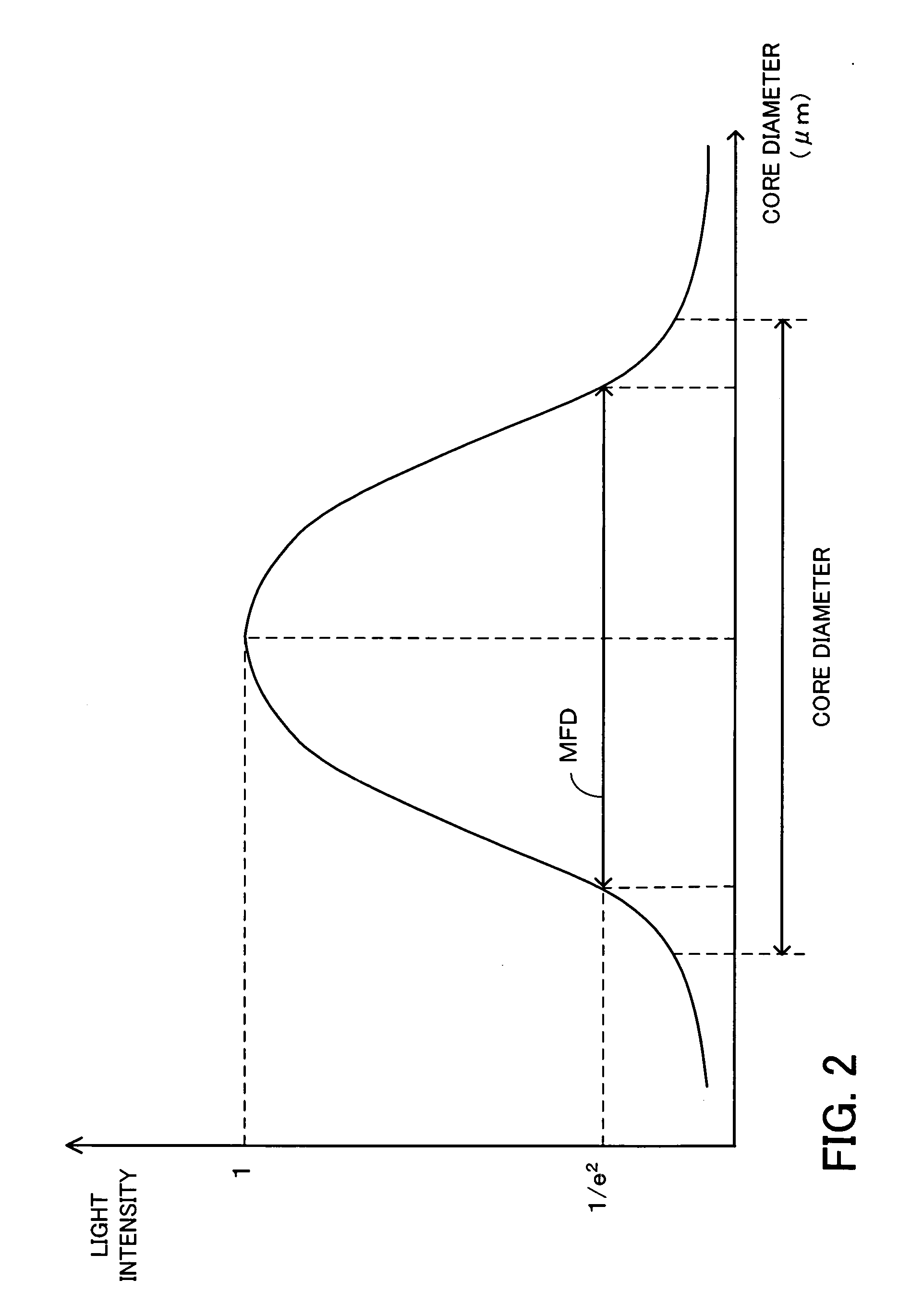Optical amplifier and optical fiber
an optical amplifier and optical fiber technology, applied in the field of optical amplifiers and optical fibers, can solve the problems of low gain of edfa, inability to obtain sufficient gain, and nonlinear effects (nonlinear optical effects) that have shown up, and achieve high reliability and effectively reduce four-wave mixing
- Summary
- Abstract
- Description
- Claims
- Application Information
AI Technical Summary
Benefits of technology
Problems solved by technology
Method used
Image
Examples
Embodiment Construction
[0074] An embodiment of the present invention will now be described with reference to the drawings. FIG. 1 is a view for describing the principles underlying an optical amplifier according to the present invention. An optical amplifier 10 comprises an optical fiber 11, an excitation section 12, and a multiplexing section 13 and amplifies an optical signal.
[0075] The optical fiber 11 is an optical amplification medium which has positive chromatic dispersion in a signal band where signal light to be propagated is included and which amplifies a wavelength division multiplex (WDM) signal containing a plurality of wavelengths. The excitation section 12 inputs excitation light to the optical fiber 11.
[0076] The multiplexing section 13 combines the WDM signal light and the excitation light. A multiplexed signal is inputted to the optical fiber 11. The WDM signal light is amplified in the optical fiber 11 by the excitation light and is outputted from the optical fiber 11. The optical fibe...
PUM
 Login to View More
Login to View More Abstract
Description
Claims
Application Information
 Login to View More
Login to View More - R&D
- Intellectual Property
- Life Sciences
- Materials
- Tech Scout
- Unparalleled Data Quality
- Higher Quality Content
- 60% Fewer Hallucinations
Browse by: Latest US Patents, China's latest patents, Technical Efficacy Thesaurus, Application Domain, Technology Topic, Popular Technical Reports.
© 2025 PatSnap. All rights reserved.Legal|Privacy policy|Modern Slavery Act Transparency Statement|Sitemap|About US| Contact US: help@patsnap.com



